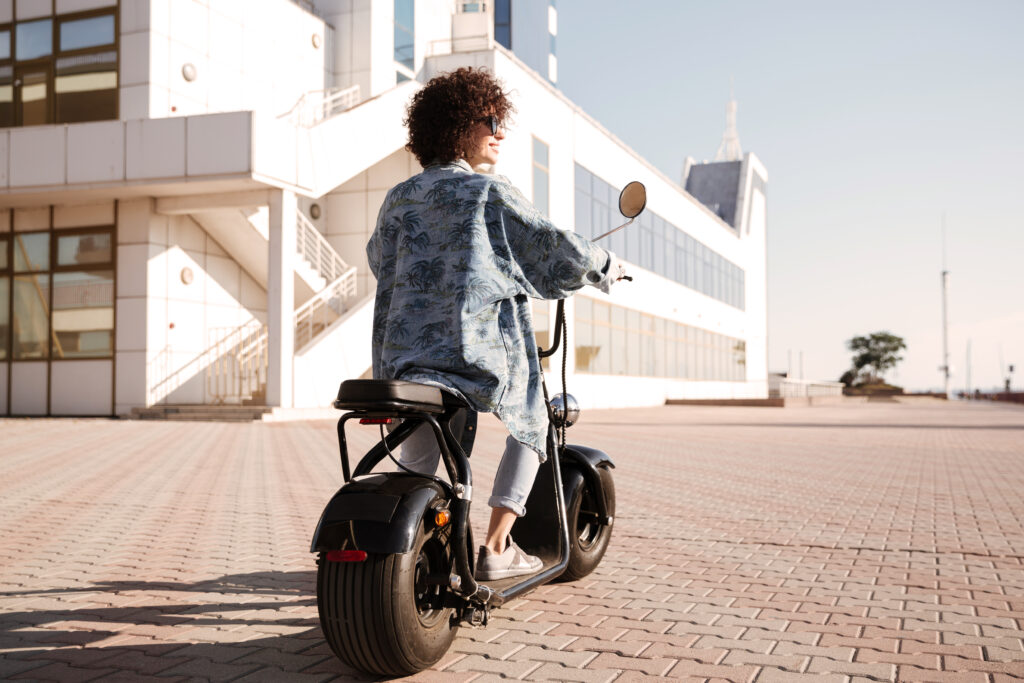The motorcycle industry has been witnessing a steady rise in the popularity of electric motorcycles.
These electric machines boast faster charging times, longer ranges, and an ever-expanding variety of styles and charging infrastructure. But have they truly surpassed the unbeatable allure of gas-powered motorcycles, which have been tried-and-true companions for riders over the years? In this article, we’ll explore the merits of each and present our verdict on this ongoing battle.
Which bike should I buy electric or petrol?
The decision between buying an electric bike or a petrol-powered bike depends on various factors, including your personal preferences, usage patterns, environmental concerns, and budget. Ultimately, the choice between an electric bike and a petrol-powered bike hinges on your specific needs and priorities. If you’re concerned about environmental impact, have access to charging, and prefer lower operating costs, an electric bike might be a great option. On the other hand, if you prioritize longer rides, quicker refueling, and a wider range of options, a petrol-powered bike could be more suitable. It’s advisable to test ride both types of bikes and consider the practical aspects of your daily use before making a decision.
Electric Motorcycles: A Green Revolution
When it comes to environmental consciousness, electric motorcycles claim the high ground. Their most significant advantage is the lack of emissions, which resonates with environmentally conscious consumers. The reduction in greenhouse gases is a compelling factor for many riders when making their purchasing decisions.
While there are emissions associated with the manufacturing and end-of-life processes, studies show that overall emissions from electric motorcycles are significantly lower than those produced by their gas-powered counterparts. Reports from the Argonne National Laboratory and the EPA support this claim, even when considering the emissions from electricity production during charging.



Moreover, owning an electric motorcycle can be cost-effective in the long run. Charging and maintenance expenses are typically lower compared to gas-powered bikes. Most charging occurs at home, and as of January 2023, the average cost of one kilowatt-hour of electricity for residential consumers was just over $0.15. Public charging stations, such as those provided by Electrify America, also offer convenient options for electric motorcycle owners. With over 130,000 charging stations throughout the United States as of March 2023 and a planned expansion of 500,000 stations by 2030, the infrastructure for electric vehicles is rapidly growing.
As electric technology continues to advance, we can expect to see a wide range of electric motorcycle options to cater to various preferences and riding styles.
Quiet and Powerful: The Perks of Electric Bikes
Beyond their green credentials, electric motorcycles come with several other benefits that appeal to different riders. Their quiet operation and instant torque offer a unique riding experience that many enthusiasts appreciate. Additionally, the absence of a fuel tank allows for innovative storage solutions, and while some electric motorcycles may be heavier than traditional models, designers have managed to maintain excellent handling with low centers of gravity. The diversity in electric bike offerings has expanded rapidly, with adventure bikes, off-road bikes, scooters, cruisers, minibikes, retro-inspired machines, and standard street bikes now available to choose from.
Which bike is better electric or petrol?
With the big concern over escalating pollution, electric cars emerge as a much-needed respite. According to research, electric cars offer a more environmentally friendly alternative. In contrast, vehicles running on conventional fuels release harmful carbon emissions due to petrol or diesel combustion.
Conversely, electric vehicles exhibit a marked reduction in both greenhouse gases and air pollutants compared to their petrol counterparts. This shift has contributed to a growing inclination towards electric vehicle adoption. Understanding the ecological impact of electric vehicles is paramount. A study conducted by the European Energy Agency revealed that electric cars exhibit carbon emissions approximately 17-30% lower than their petrol or diesel counterparts. Moreover, the use of low carbon electricity further enhances the emissions profile of electric vehicles.
How much is a electric bike?
For a good quality, serviceable electric bike, the starting price range can be $1,500-$2,500 with options that can go much higher. The average price of an e-bike is about $2,000. Entry-level electric bikes are about $1,000. High-end e-bikes can cost $6,000 or more. While you can find new e- bikes for less than $500, we don’t recommend them. Here’s why: The cost of an e-bike starts with the cost of the frame and components, just like any other bike. Higher-end durable components like a drivetrain and better brakes (to stop a faster moving and heavier bike) are just two factors that add cost.
E-Bikes Pros + Cons
| Travel Further: Thanks to their electric motors, you can travel further than you might do on a regular bike. | Expensive: E-bikes can be a costly investment, ranging anywhere between £400 to £5,000. |
| Physical Benefits with Minimal Effort: You’ll still get your daily dose of cardio, but you won’t have to work as hard as you would on a regular bicycle (unless you want to – in which case, sweat to your heart’s content!) | Higher Risk of Theft: E-bikes are unique and valuable. Unfortunately, this puts them at a higher risk of theft than regular bicycles. |
| Cheap Transportation: They may be a costly investment, but they’re a cheaper way to get around. You won’t have to worry about parking fees, spaces, or any special licences and registrations. | Charging Takes Time: If you run out of juice, you may be waiting a while to charge back up. Although some tourist regions have e-bike charging stations, they’re not that common yet, so it’s not easy to top up on the go. |
| Eco-Friendly: Every time you hop on your e-bike, you’ll be reducing your carbon footprint. They produce zero emissions, and most batteries are made with lithium-ion, which is considered one of the best options currently available. | Costly and Complex Repairs: Because their components are complex, and parts can be hard to come by, you’ll end up paying more for repairs than you would with a regular bicycle. |
Are electric bike faster than gas bike?
Electric bikes offer a significant edge over traditional pedal cycles, primarily due to their speed advantage. E-bikes have the capability to reach speeds of up to 20 miles per hour (or even 28 mph for class 3 models), surpassing the average speed of regular bikes, which typically peak at around 10 miles per hour for beginners or 15 mph for intermediate riders.
This increased speed makes e-bikes ideal for commuting and other scenarios where swift travel is essential. Another key benefit of electric bikes lies in their reduced pedal effort. The integrated motor assists the rider, facilitating easier navigation of hills and covering longer distances effortlessly. As a result, e-bikes become an excellent choice for individuals seeking efficient transportation without expending excessive physical exertion.
Is it worth buying an electric bike?
Electric bikes have become immensely popular these days, and rightfully so, as they offer numerous advantages over traditional road bikes. However, like any new trend, misconceptions about these battery-powered bicycles can arise. The electric bike industry is booming, and it’s not hard to understand why. In the US alone, there are over 21 million bike trips reported daily, indicating a significant demand for alternative transportation methods. Surprisingly, e-bikes have even surpassed e-cars to become the most favored electric transportation option according to recent studies. Initially targeted towards the 35 and over age group, electric-assisted bikes have transcended demographics and now enjoy equal popularity among the younger generation.
Embracing the cutting-edge technology, these young riders are also opting for e-bikes in large numbers. With prices dipping below $1000, e-bikes have become reliable, easy to ride, and affordable, making them an attractive option for an increasing number of individuals. Moreover, they contribute to eco-friendly living and sustainable travel practices, adding to their appeal. The electric bike industry has undergone a revolutionary transformation, and it is poised to redefine how we travel. Thanks to technological advancements and updated regulations, e-bikes are now legally permissible on roads, further fueling their adoption.
As e-bikes emerge as the future of transportation, you might wonder if they are the right fit for you. With their numerous benefits and growing prevalence, considering factors like your personal needs and preferences can help you determine if embracing this transformative mode of transport aligns with your lifestyle.
Gas-Powered Motorcycles: Unbeatable Longevity and Convenience
Despite the rising tide of electric motorcycles, gas-powered bikes remain undefeated in terms of endurance and convenience. With gas stations more widespread and readily available, riders can quickly top up their tanks in a matter of minutes, unlike the relatively lengthier charging times for many electric bikes. For commuters and daily riders within city limits, this may not be a significant concern. However, for those planning long road trips, gas-powered motorcycles still hold an edge.
Furthermore, gas-powered motorcycles offer a sense of connection and personality that resonates with many riders. The availability of repair shops nationwide allows for a level of self-maintenance and customization that adds to the allure of gas-powered bikes. The unique sounds and characteristics of combustion engines, such as the difference between a V-twin and an inline-four, add to the emotional connection riders have with their machines. This intangible quality, the bond between rider and bike, is a cherished aspect of motorcycling.
The Verdict: Gas-Powered Bikes Still Reign Supreme
While electric motorcycles have made impressive strides, for now, gas-powered bikes remain at the top. Acknowledging the importance of sustainability and eco-consciousness, it’s undeniable that the intangible qualities offered by combustion engines have yet to be surpassed. Additionally, the convenience of quick fill-ups at gas stations and the extensive availability of repair shops give gas-powered motorcycles an edge over their electric counterparts.
Furthermore, the lower initial cost and the overall aesthetic appeal of gas-powered bikes continue to attract a vast number of enthusiasts. The future may indeed hold a crown for electric motorcycles, but until that day arrives, the gas-powered machines will continue to reign supreme in the hearts of motorcycle enthusiasts worldwide. If you’d like to upgrade your gasoline powered KTM, YAMAHA or Husqvarna feel free to visit our SHOP and pick out various PREMIUM Style & Protection parts today. Enjoy!
Oh yeah. We totally forgot … Check out our Youtube channel if you want to learn more about PREMIUM Style & Protection parts for your bike.










